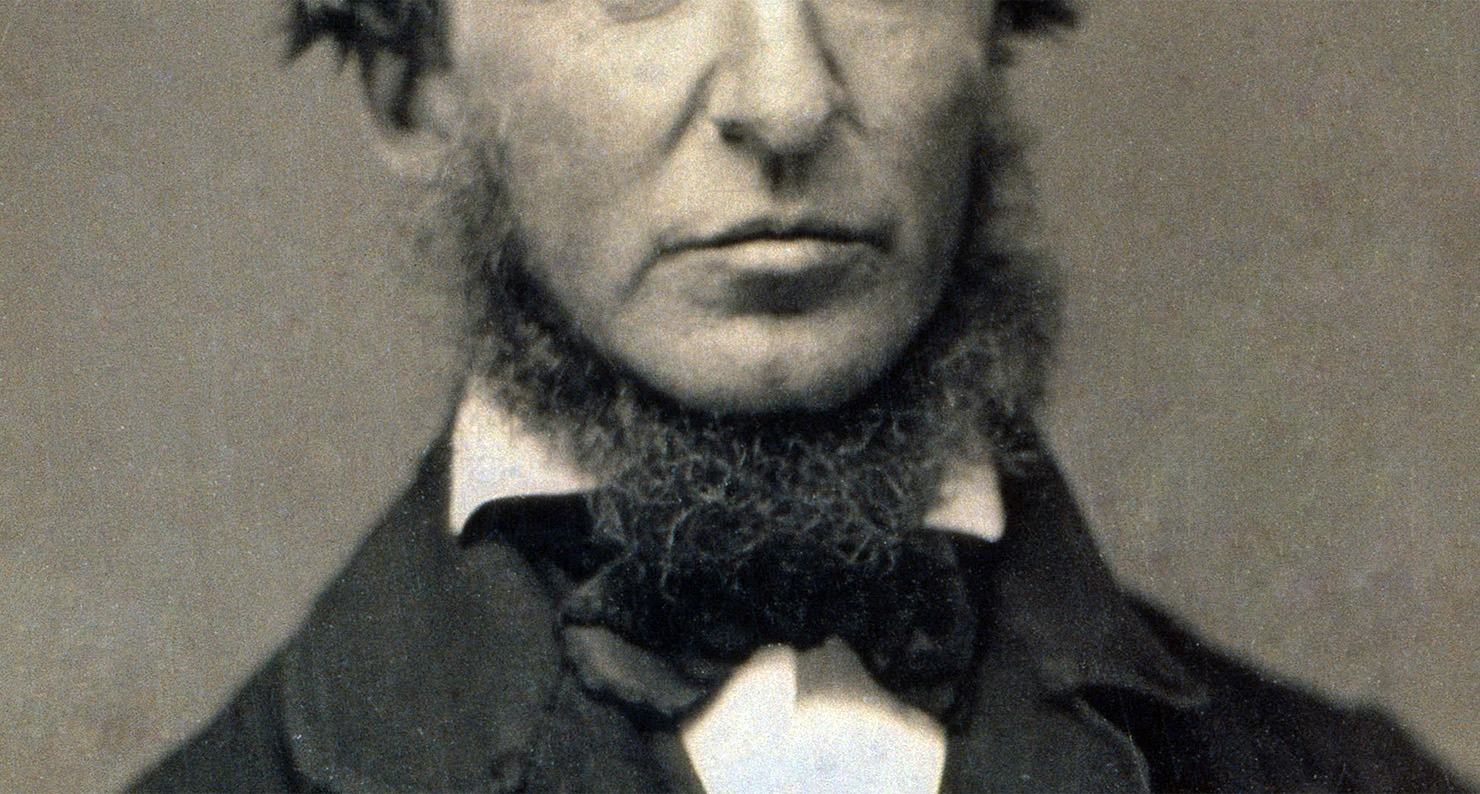
Did Louisa May Alcott accuse Henry David Thoreau of having a neckbeard?
• In 1865 President Abraham Lincoln had a luxury steam locomotive constructed for his use during his second term. Christened the United States, it was supposed to serve the president as he traveled around the country. Instead it was used only once: to carry his body from Washington, D.C. to its final resting place in Springfield. In 1999 an Illinois engineer began to build an exact replica of the train and in May 2015 the Lincoln Funeral Train will begin its return journey from Springfield to D.C. (Atlas Obscura)
• Did Henry David Thoreau have a neckbeard, or didn’t he? An investigation into a facial-hair claim made by Louisa May Alcott and recorded in Emerson’s Journals concludes that like so many historical rumors, this one begins and ends, of course, with Wikipedia. “Louisa May Alcott reportedly mentioned to Emerson that Thoreau’s neckbeard ‘will most assuredly deflect amorous advances and preserve the man’s virtue in perpetuity’…There are five perpetuitys in the fifteen volumes, and definitely none of them are that quoted. There are no instances in which Thoreau and beard appear together, nor any variation of neckbeard.” (Medium)
• Archaeologists in Poland discovered a 250-year-old sex toy in an excavated privy. The phallic object is “large, thick, made of leather filled with bristles, and has a wooden tip.” (Discovery)
• Six months to the day after the Japanese bombed Pearl Harbor, the invasion of two islands at the far end of the Aleutian archipelago began. “The lone Bureau of Indian Affairs bureaucrat was executed and the forty-two Aleut residents were rounded up; they would eventually be shipped to Japan, as prisoners of war, where more than half of them would die of starvation and tuberculosis before the end of the fighting.” After the attack, 831 Aleuts would be transported by the U.S. to southern Alaska, where 85 would die in internment camps. (Maisonneuve)
• Only a few people each year get to see the world’s oldest paintings in Chauvet. Everyone else can visit a $60 million reproduction of the caves at the nearby Caverne du Pont-d’Arc. Recently, a reporter for Smithsonian magazine was one of the few allowed to enter prehistory’s hottest club. “Nothing could have prepared me for Chauvet’s vastness and variety…The lamp on my miner’s helmet, along with a seepage of natural light, illuminated a cathedral-like gallery that soared at least six stories high. As we trod along a stainless-steel walkway…I stared at an extraordinary panoply of colors, shapes, and textures.” (Smithsonian)
• Amateur John Wilkes Booth historians, known as “Boothies,” were consulted for the first time in a new biography of the assassin. “Boothies—the term, some say, originated as an insult used by Lincoln scholars—have long labored under the suspicion of being apologists for the assassin, or worse. But in recent years, their dogged efforts have received more credit from ‘Lincoln lovers,’ as Boothies sometimes jokingly call them in return.” (The New York Times)
• What does Joni Mitchell have in common with the children of a seventeenth-century French village? They both displayed symptoms of Morgellons Disease, in which rashes, lesions, and tiny mysterious hairs cause the sufferer pain. It’s also a disease that, according to doctors, may or may not actually exist: “The vast majority of the 4,000 Morgellons sufferers were middle-aged white women who lived in California.” (Jezebel)